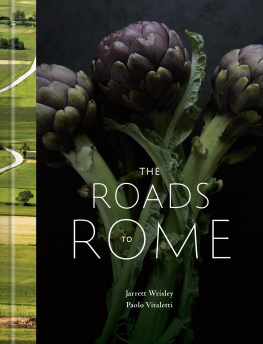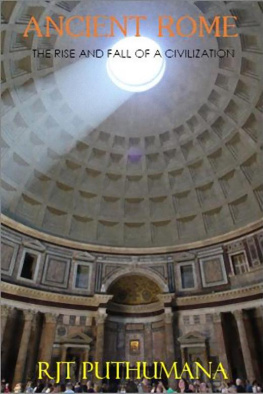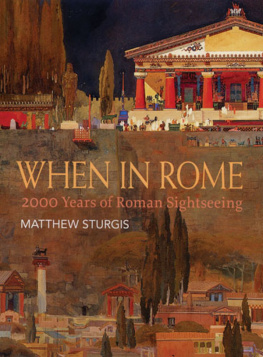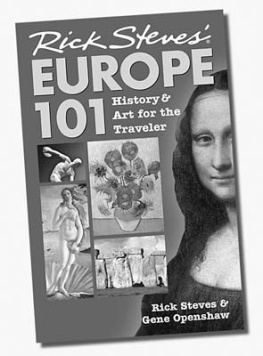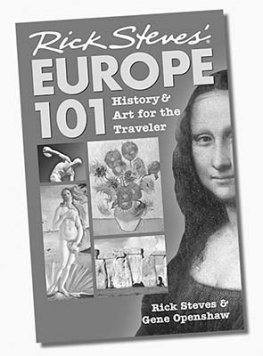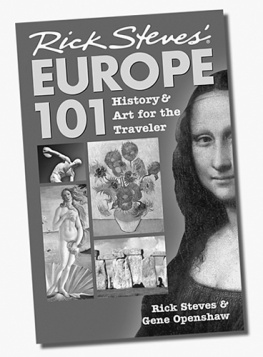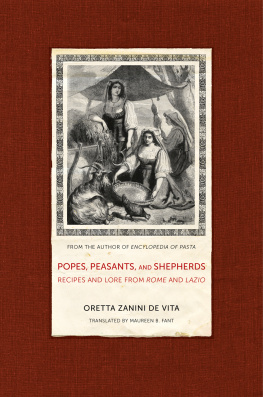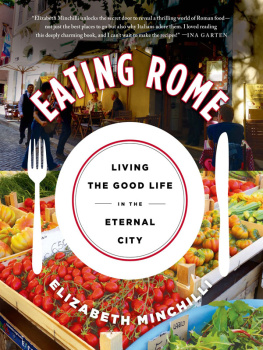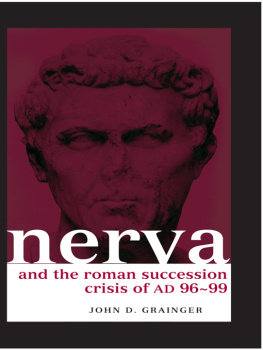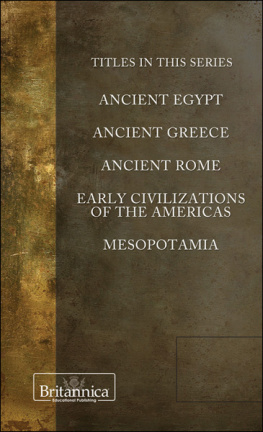Contents
Landmarks
Print Page List
JARRETT WRISLEY is a food writerturnedrestaurateur living in Bangkok. He has written for The Atlantic, Lucky Peach, The Art of Eating, Food & Wine, Travel + Leisure, National Geographic, and various magazines and newspapers across Asia. His two restaurants, Soul Food Mahanakorn and Appia, have been praised by the New York Times, Wall Street Journal, Travel + Leisure, and CNN Travel.
Italian-born chef PAOLO VITALETTI is the cofounder of Appia with Jarrett Wrisley in Bangkok. As a team, they operate a farm outside of Rome where they plan to open an inn and restaurant. Paolo also owns Peppina, Bangkoks best Neapolitan pizzeria.
ACKNOWLEDGMENTS
FROM JARRETT:
This book is for my mother, Jane, who taught me how to appreciate good food; and for my father, Jim, who made me understand the importance of hard work. And for my wife, Candice, who painted the beautiful maps in these pages, and so gracefully managed my frequent trips to Italy, while building a family and a restaurant, together.
I wouldnt have been able to write this book without the friendship, advice, and generosity of my coauthor, Paolo. You are a brother to me. And to Pia, the best home cook Ive ever known, and Stefano, for everything youve done at La Santola. Youve all treated me like family, from the start.
To Jason Lang, for your patience and your gift. (Now get back in the van. One more stop!)
To Francis Lam, for believing in two guys with an Italian restaurant in Bangkok.
To Zack Waldman and Almerindo Portfolio. To Michael Ferchak and Alex Browne, who believed in me when I needed it most.
Id like to thank my friends and mentorsboth in the kitchen and behind a keyboardfor their guidance. To the Shanghai crew, Brad Turley and Eric Johnson and Jason Casey and Kelley Lee, who tolerated my longing to open a restaurant, and who kindly suggested that I shouldnt (perhaps I should have listened). To David Thompson, my dear and crazy friend, for taking me under your tattered wing and inspiring me both as a writer and as a cook. To Andy Ricker, whose words help spring me from my first restaurant. To Rick and Dianne Bayless, for your generosity and advice. To Dylan and Bo, Chalee and Prin, and Tim, and the rest of the proud community of chefs in Bangkok. To the Black Sheep fam in Hong Kong.
To Jim and Deb Fallows, for your kindness and guidance as I navigated the world as a young writer (Im still coming for my sandals!). To Anthony Bourdain, for opening my eyes to all the possibilities of traveling through food. To Corby Kummer and Ed Behr. To Mark Kitto, for my first writing gig, and Michael Cole. To Trefor Moss, my former editor and lifelong friend, and Adam Williams and Charlene Dy and the whole 8 Days crew. We made food writing in a cloud of kerosene smoke fun.
To Michael White, Jean-Georges (and Danny!), Ken Hom, Leela, and everyone else that so kindly supported this book.
To Dado and Steve.
Finally, Id like to thank everyone who appears in these pages. Italy has been kind and gracious, occasionally infuriating, and always fascinating. Theres plenty more to come, I suppose.
FROM PAOLO:
To Pia, my mother. I love you so much. You gave me everything.
And also to my father, who introduced me to so many amazing things to eat, and the mentality of hard work.
To Stefano Vitaletti, my brother, ready to lend a helping hand at any time. Your support in helping us find so many interesting people made this book possible.
To Jarrett. You are awesome to deal with an asshole like me.
To Jason. We started in Parking Toys and ended up on the Via Appia. Much love.
I also cant forget the people who shaped my life throughout my career:
To Graziano Bonacina, my first real head chef, who introduced me to the old-fashioned romance of the kitchen.
To Domenico e Leonardo di Clemente, who mentored me during the most amazing two years, and taught me another world of techniques that would change my mind about food.
To Martin Knaubert, the German Tanker, for showing me how to lead a team.
To Marco Bax, who taught me so much and didnt let me give up.
To Riya Sawamiwas (Jean), who loved what we were doing and supported us to the max, and to the opening team at Appia, who helped bring a dream to life.
To the Bangkok crew who has always been supportive and helpful: Dylan and Bo, Tim, Daniel, Billy, Brian, and the rest of the chefs and hooligans who were there for us from the beginning.
And last but not least, to my beautiful wife, June, who has allowed me to spend fifteen hours a day in the restaurant and continues to love and support me while raising our two amazing creatures, Giulio and Giorgio.
On Norcia, and Butcher Shops, and Salumi
Our drive from Rome northeast to Norcia began with a small detour to the Castelli Romanithe Roman Castlesseveral small towns that are perched on the steep Alban Hills. The most famous, Castel Gandolfo, has been the popes summer residence for the past five hundred years. Climb up the stairs and youre greeted with an astonishing sight: the sapphire volcanic crater of Lake Albano, the surrounding towns, and the isolated palazzo that hugs the walls of the crater. This string of small towns once supplied Rome with much of its wine and freshwater fish. The Via Appia runs right below the center of Castel Gandolfo, straight to the center of Rome.
We continued past Castel Gandolfo, in search of sandwiches.
A few minutes later we arrived in the town of Ariccia, which claims porchettathe whole, crisp-skinned, deboned, fennel-and-garlic-stuffed pigas its own. We ate focaccia stuffed with it and stared out over the plain toward the sea. Then we stopped at a fraschetta, a place that is more like a permanent picnic than a restaurant, for a few jugs of fizzy orange wine, some cold cuts, and cheese. A man played the accordion, and Romans drank too much and sang songs. It was utterly charminga rare glimpse of Roman life that seemed untouched by the mass tourism of the citys center.
After lunch, we angled north, toward Florence and the old Via Cassia, before veering east onto the SS4, heading toward Norcia. Since the times of ancient Rome, this routethe Via Salariahad been used to transport salt, first by the Sabines, a thousand years before Christ, from the flats near the citys main port of Ostiaup and over the Apennine mountains, which began to appear on the horizon as we headed east.
The landscape changed with every hour we drove. The pignolithe grand, broccoli-like stone pines of the flatslead to the Alban Hills, where olives and grapes hang off the hillsides. We dropped back down into the pines, before rising up again into more rugged, temperate central Lazio. Then it all became alpine. Two hours into our trip, the temperature had dropped twenty degrees. Every coffee shop on the side of the SS4 was also a butcher shop; they had started as poste, or trading postsplaces for travelers to eat, sleep, and then continue on their journey.
I had been curious about Norcia for years. Rome is a city of cured pork; of hams and salumi and especially guanciale, the jowl of the pig that is shaped like a slimmer American football, cured in salt and pepper, and hung from the rafters of norcineria. The butcher shops in Rome mostly bear this namewhich means of Norciathough the town lies about a hundred miles to the northeast, in Perugia. The great Roman pastascarbonara, amatriciana, and griciaall begin with cubes of this cured pork. So it is difficult to separate the trade of the norcino, the pork butchers of Norcia, from the classic dishes of Rome. One exists because of the other.
Norcia sits along the Via Salaria, in a cool, dry mountain valley thick with wild boars called

